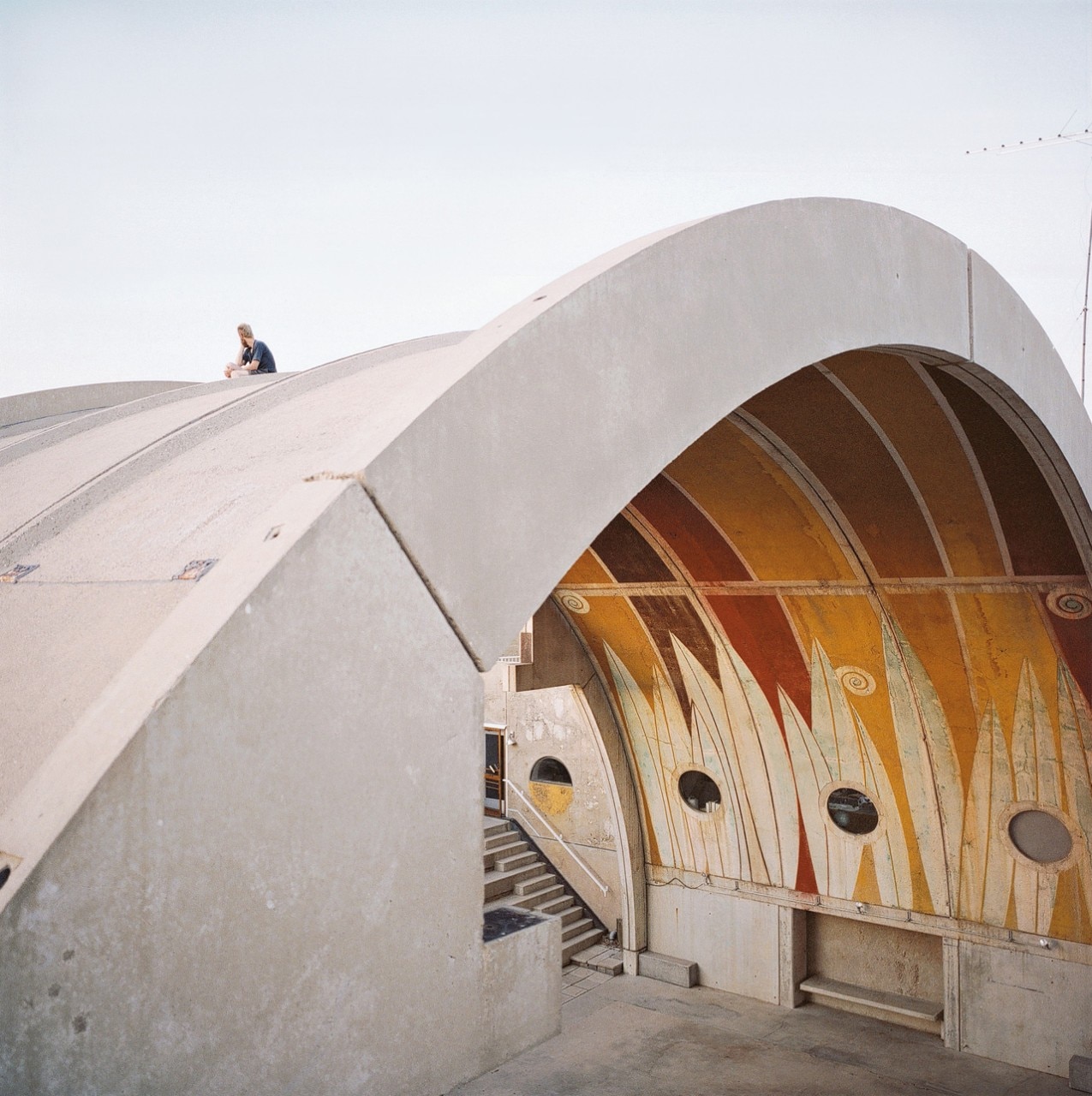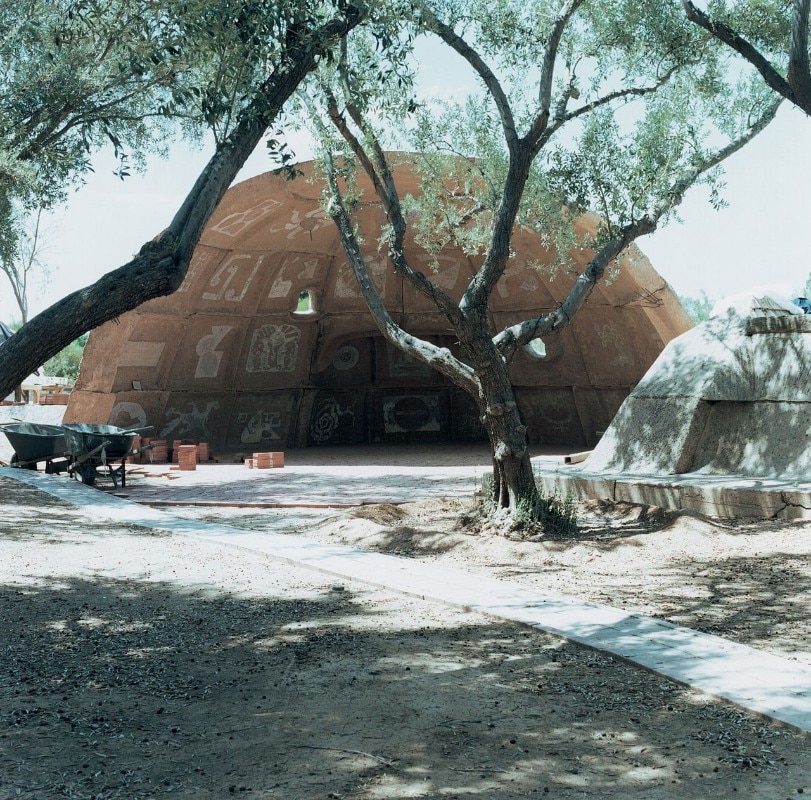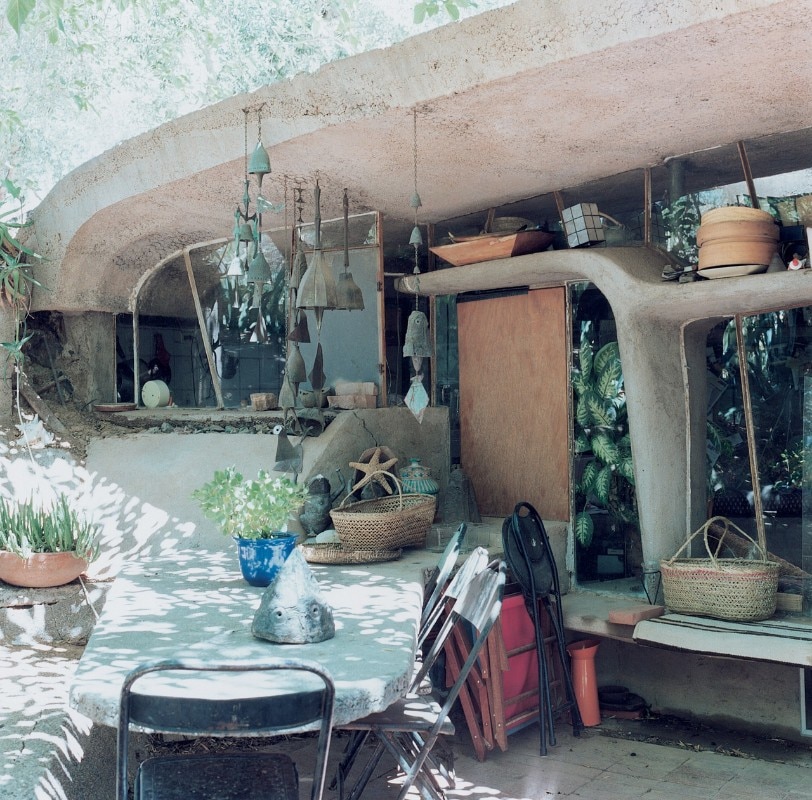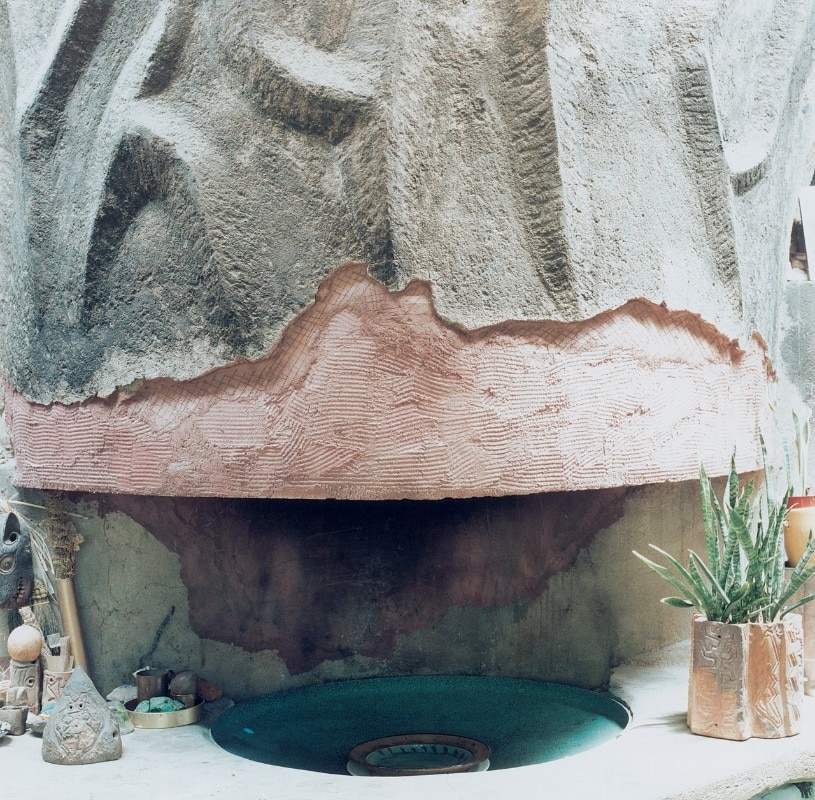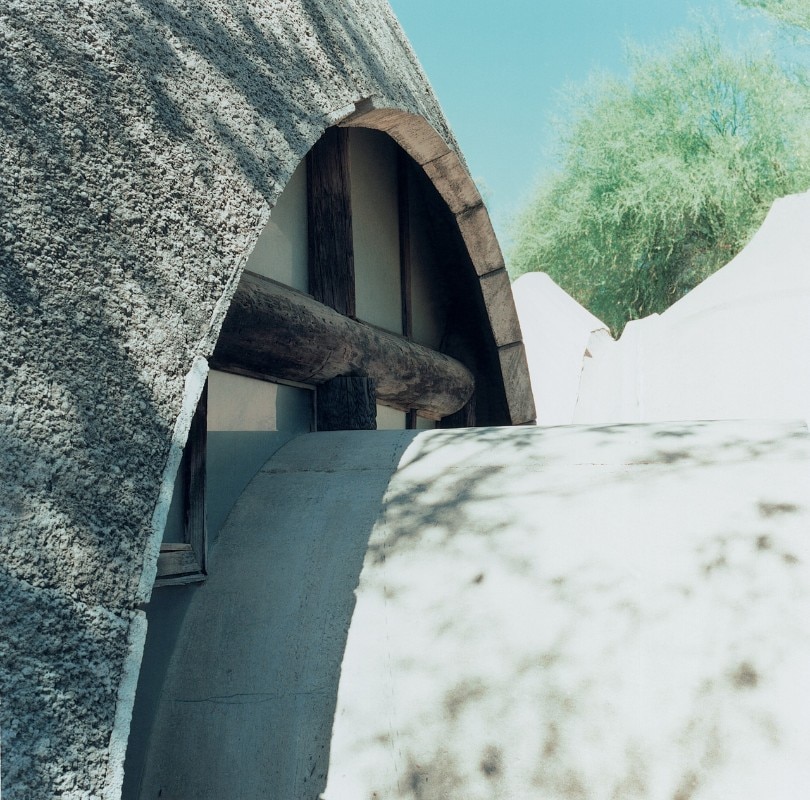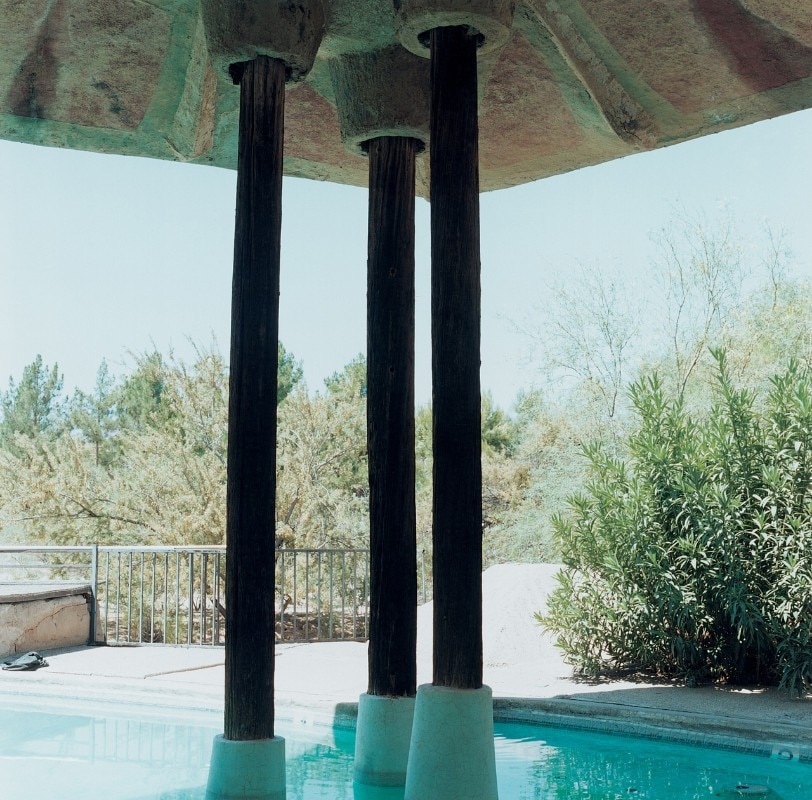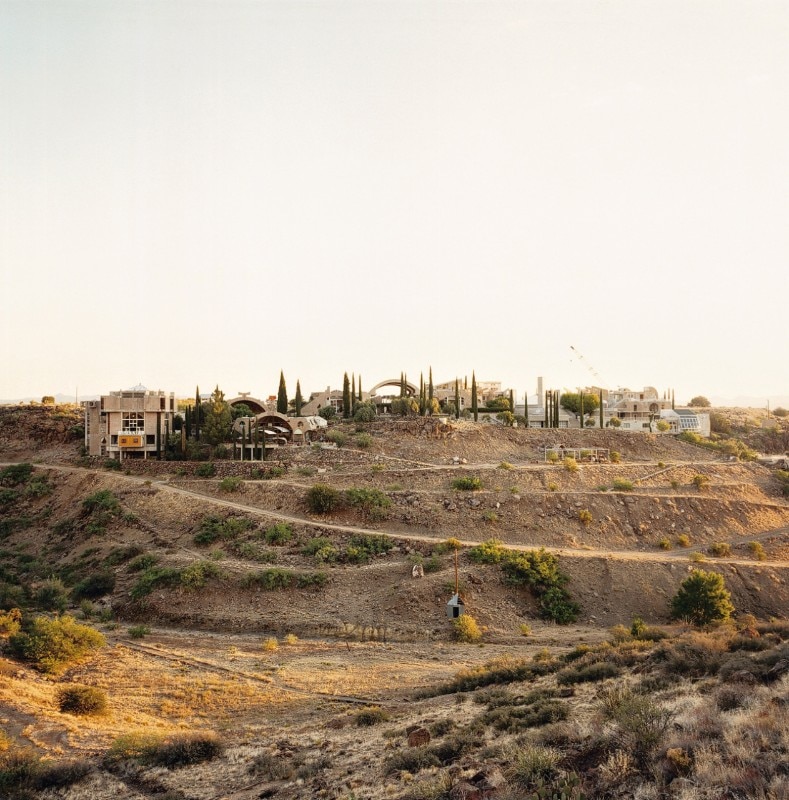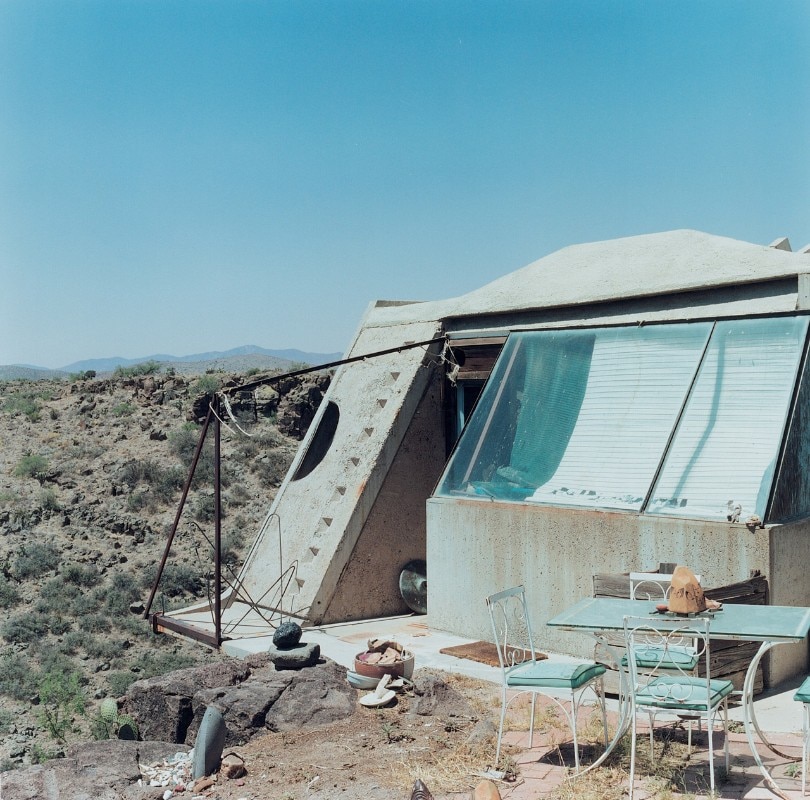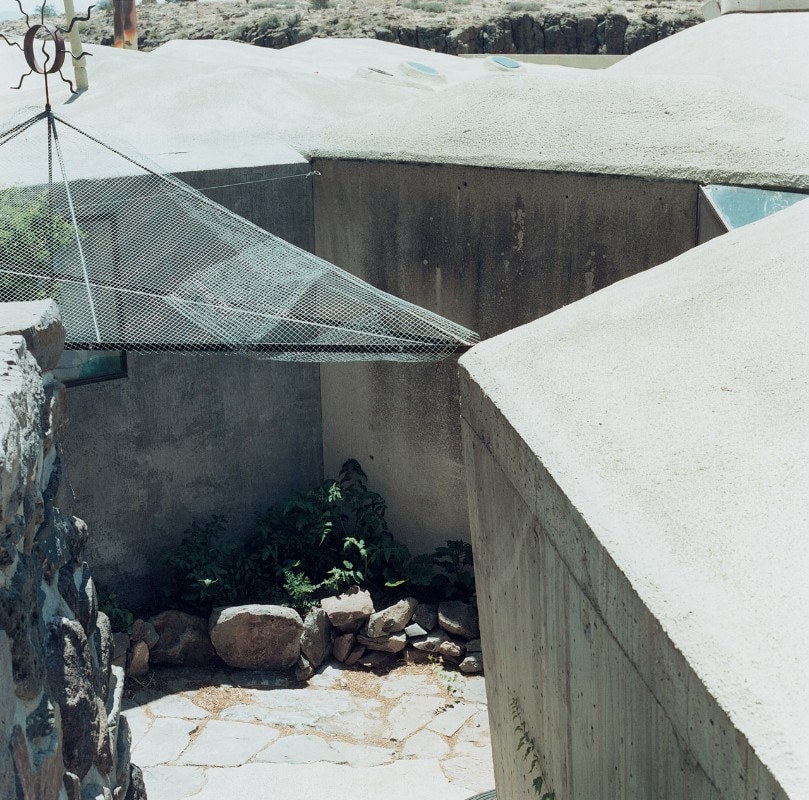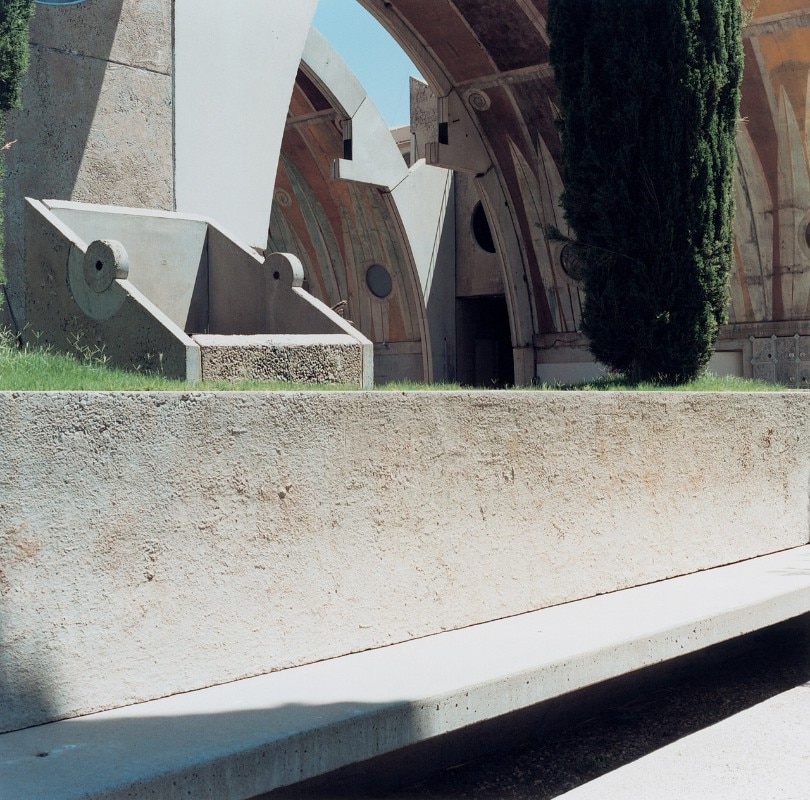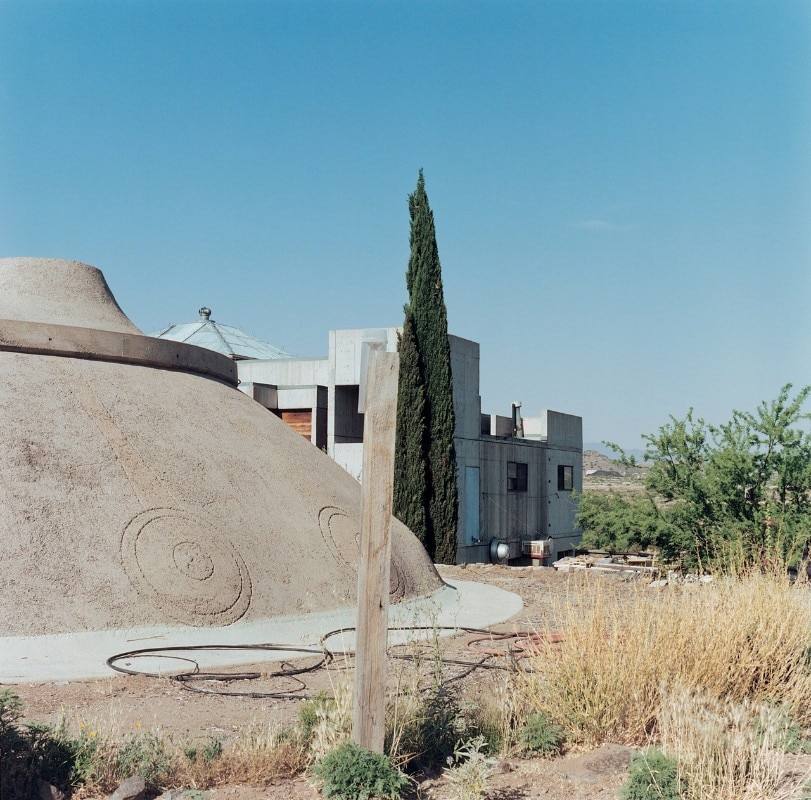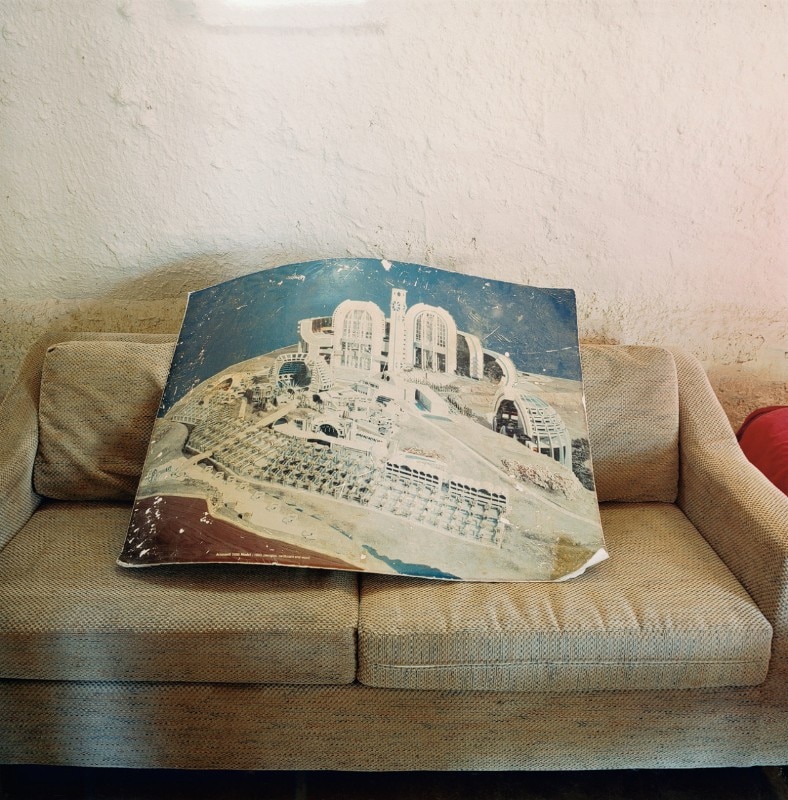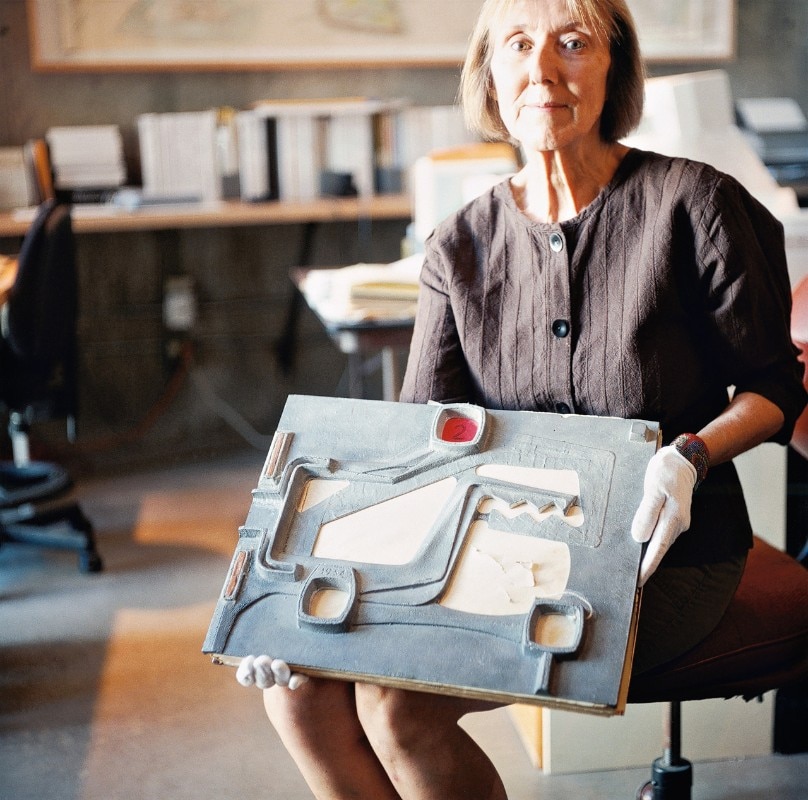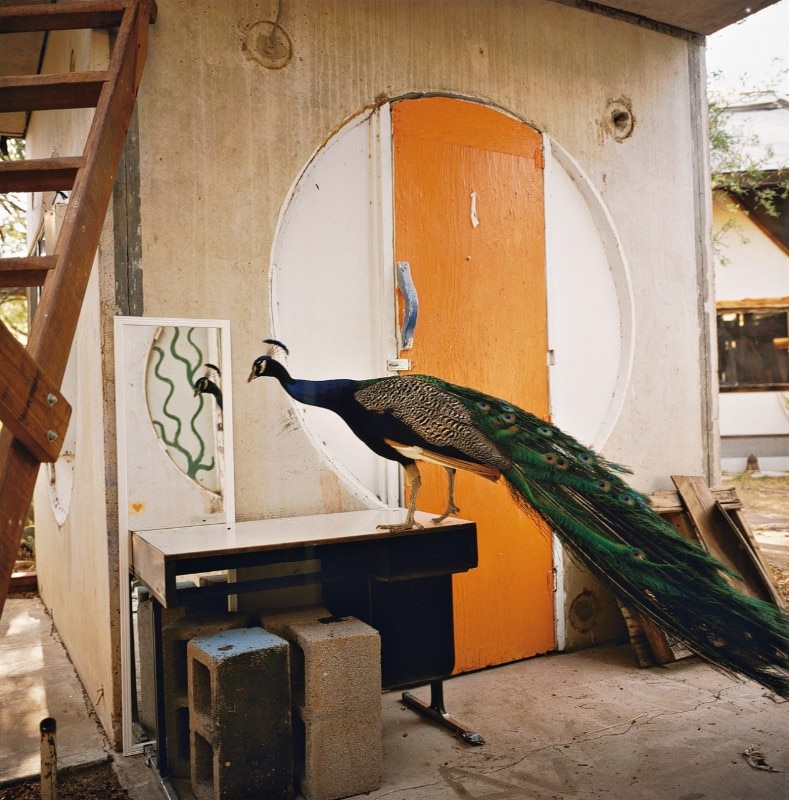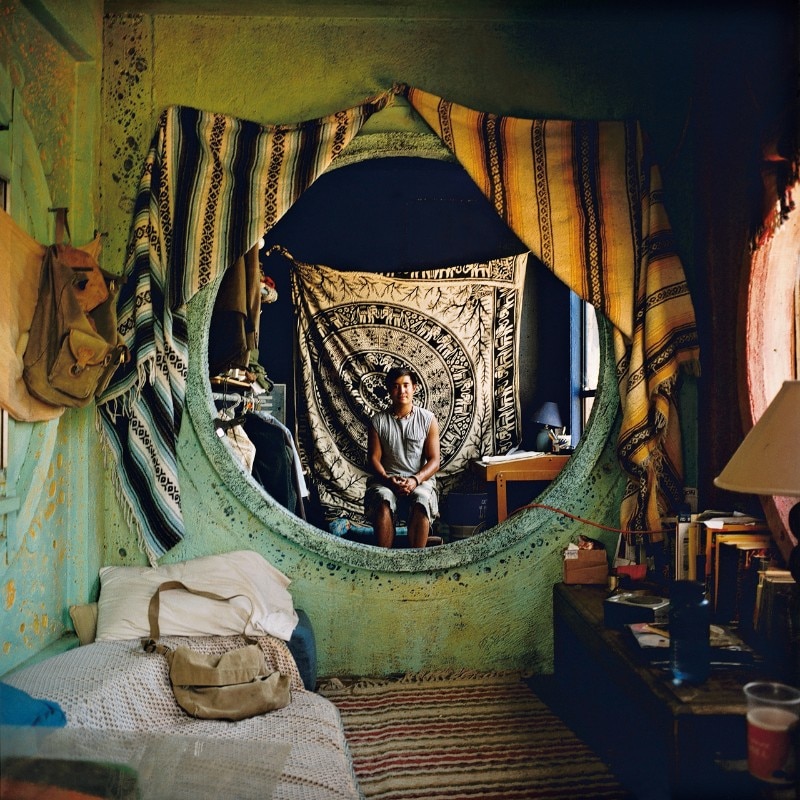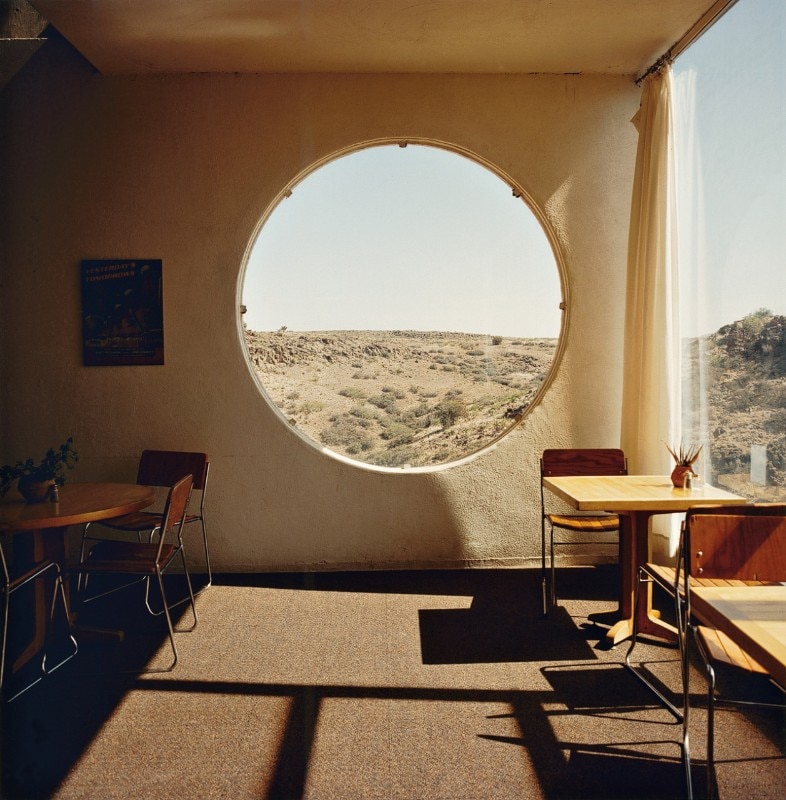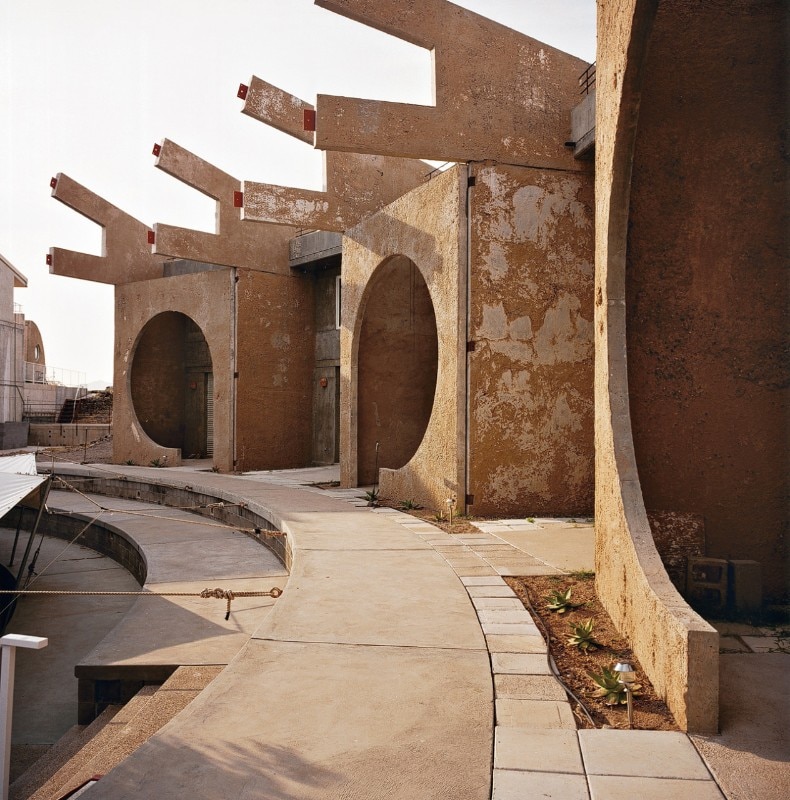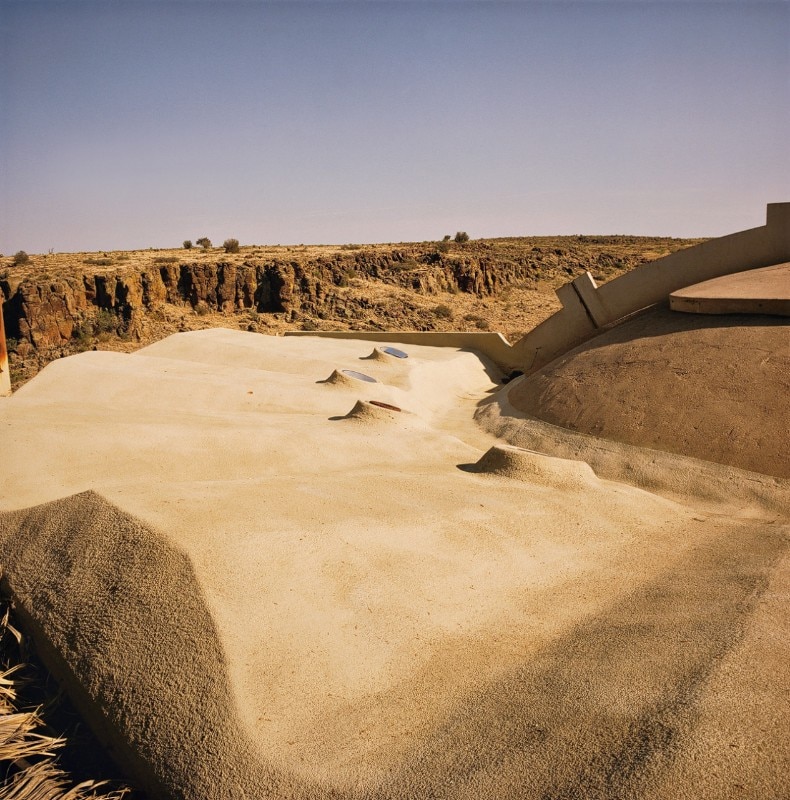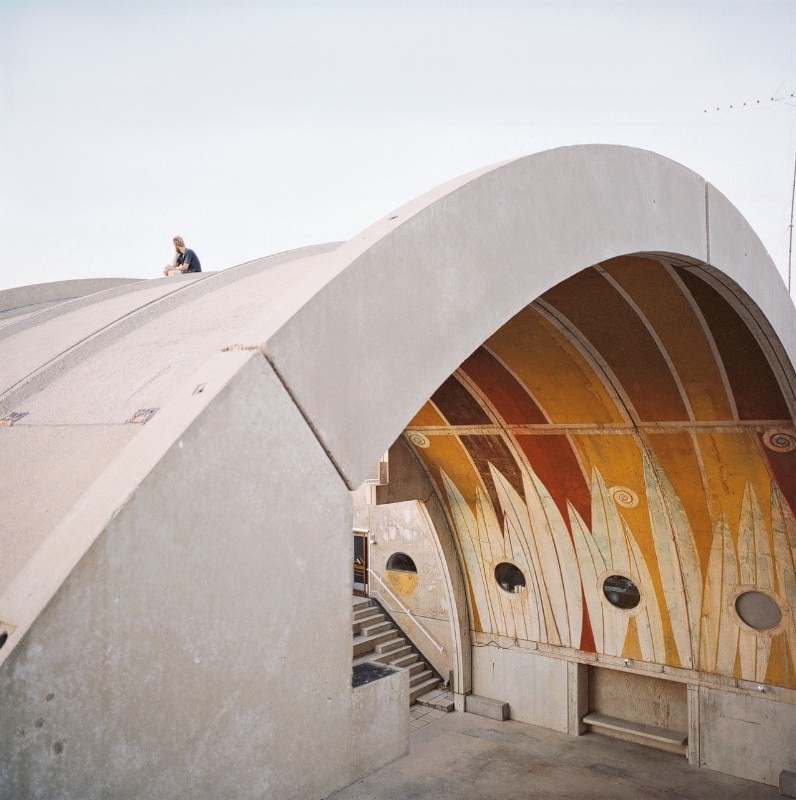In the 50s, following his experience with Frank Lloyd Wright at Taliesin West, Italian architect Paolo Soleri developed Arcology, a new theory merging architecture and ecology: this theory achieved its first material expression when Cosanti (cosa-anti, anti-thing) in the outskirts of Phoenix. In 1970 then, on top of a mesa in the Arizona desert, Soleri started the still ongoing Arcosanti open community project. As an environmentalist consciousness was gradually taking over the collectivity between postwar and youth protest years, Arcosanti became a destination for many young people leaving the metropolis to take part in the construction of a vision. In 2006, Emanuele Piccardo and Filippo Romano took a trip to Arizona and Nevada to discover the two communities and their context, coming back with a 110-image corpus, shown for the first time in 2008. Thirteen years after the exhibition, a selection of those images is shown again at Castello d’Albertis - Museo delle Culture del Mondo (World Cultures museum) in Genoa.
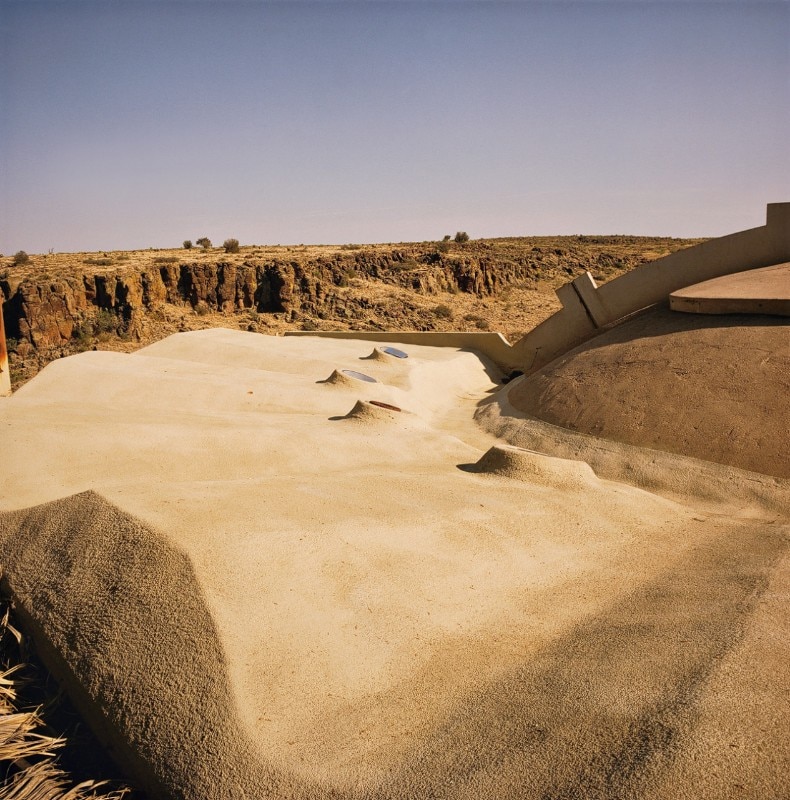
An unprecedented account of Soleri’s non-utopias at the turn of the millennium was provided by such images since the beginning: the built landscape of vaults and apses and the integrated housing units — all sharing the same tight connection to the earth all around; the actual realization of little part of the project (conceived for 5000 people, never actually reaching more than 70); the vast stretches of land left unbuilt for cultivation; time and activities in community life. Fifteen years have passed since that account was created, Paolo Soleri has died, long shadows have been cast by his personal life and behavior and by the silence of his companions at first, global changes in economy and society are now questioning the fundamental reasons of making and inhabiting a place like Arcosanti. Still, the images on show are not outdated at all, as also the two photographers themselves have claimed: those images can now question even more poignantly an entire concept of architecture, nature and society.
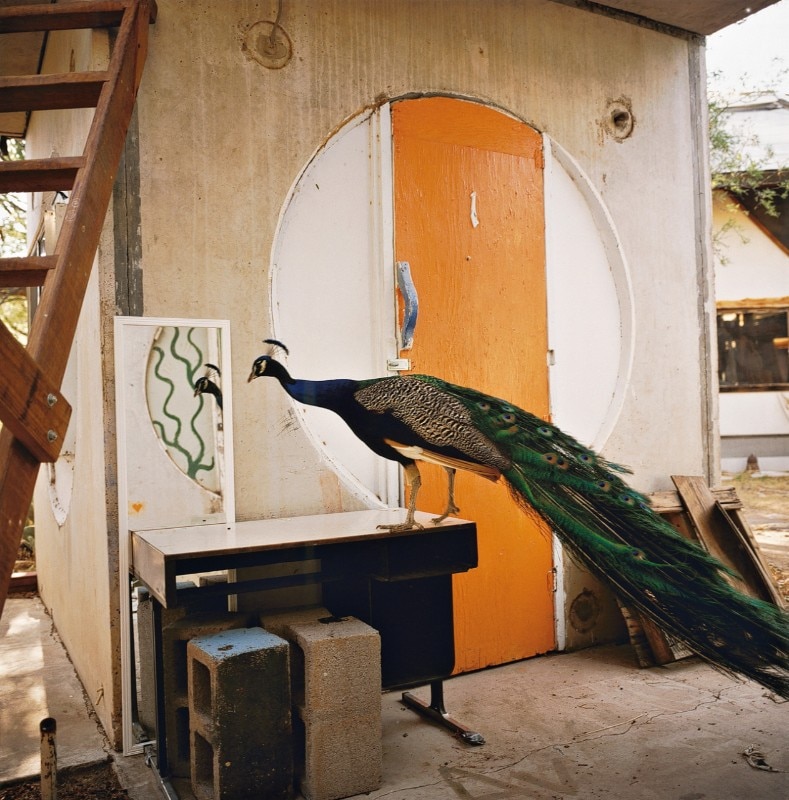
Answering to probably the most common question on such places, whether they are hideaways (for the rich) from reality or not, Piccardo has chosen to define them as places where people search for a deeper reconciliation with earth, with a land that has given so much — the Frontier has always been the land of the most powerful expressions of freedom and action across the USA — but has also been violently looted by former generations.
It’s no coincidence that the exhibition also extends to those spaces within the Museum that have been co-curated by the Hopi community, the Arizona natives who taught all the principles that structured Cosanti and Arcosanti: inhabiting earth, cultivating earth, harmonizing to earth shapes and functions of every new building.
- Exhibition:
- Soleritown. Visioni di un’utopia concreta
- Photographs by:
- Emanuele Piccardo, Filippo Romano
- Venue:
- Castello d’Albertis - Museo delle Culture del Mondo
- Address:
- Corso Dogali 18, 16136 Genoa, Italy
- Opening dates:
- until October 17, 2021


